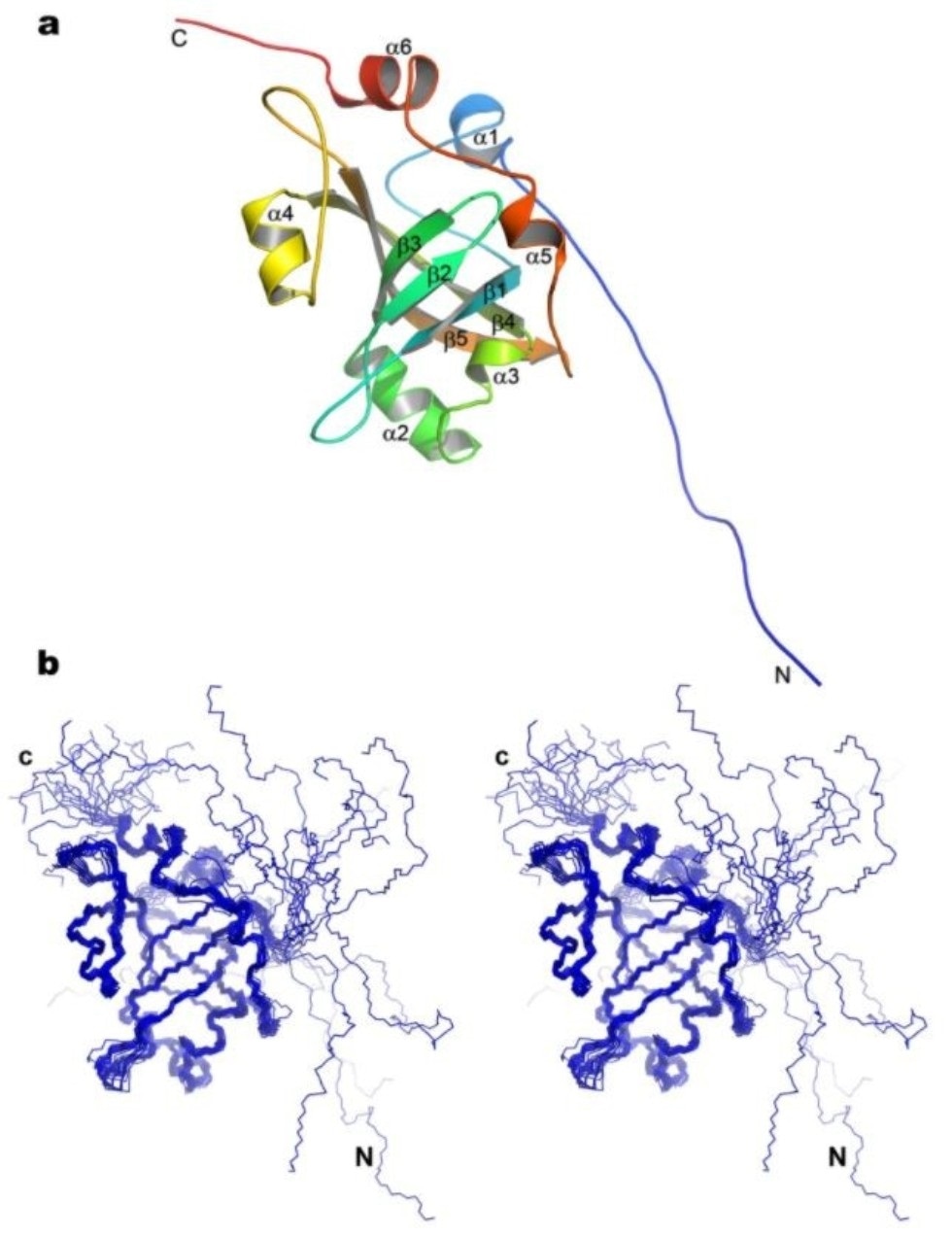The nuclear magnetic resonance spectrometer of Kazan Federal University played a crucial role in analyzing the telomerase of Hansenula polymorpha.

The solution structure of the HpEst3. (a) The topology of the secondary structure elements of the HpEst3 protein. (b) The stereo view of the ensemble of the final 20 calculated structures. Images were made using PyMOL v. 2.3. Image Credit: Schrodinger, LLC.
The work frequency of our NMR spectrometer with a cryo sensor is 700 MHz. It can glance into the structure of the most complex biochemical objects and detect how they interact with cell membranes.”
Vladimir Klochkov, Professor and Head of NMR Lab, Kazan Federal University
The telomerase was analyzed by the Department of Medical Physics at Kazan Federal University and by the Laboratory of Magnetic Spectroscopy and Tomography at Moscow State University.
Telomerase, as many complex enzymes, is not just a protein molecule, but rather a combination of several subunits. A fragment of one of the subunits, the Est2 protein, was studied by us earlier, and now we studied the structure and functions of Est3. We found out that Est3 is important for the stabilization of the whole protein complex.”
Dr Sergey Efimov, Study Co-Author and Senior Research Associate, Kazan Federal University
Spectroscopy helped to gain a better insight into the spatial structure of Est3 molecules and the interplay between them.
When molecules interact, you can see a general picture through resonance frequencies and other spectral characteristics of magnetic nuclei in their structure—how proteins contact with each other and the DNA strand, which subunits are responsible for attaching the enzyme to the DNA, and which move the complex along the chain and restore telomeres.”
Dr Sergey Efimov, Study Co-Author and Senior Research Associate, Kazan Federal University
The analogs of the examined yeast proteins can be seen in the telomerases of higher organisms, such as humans. If investigators develop drugs to control specific elements in the telomerase to inhibit its activities in tumor cells, everyone will be able to combat the progress of oncological disorders.
“As an organism grows, telomeres become shorter. The purpose is to limit the further division of cells which might have amassed errors in their DNA. Such a limitation does not exist in embryonic and stem cells thanks to the telomerase. This enzyme restores telomeres at the ends of chromosomes. A similar process happens during malignant changes in cells. Telomeres and systems of length control exist in all eukaryotes,” Efimov concluded.
Source:
Journal reference:
Shepelev, N. M., et al. (2020) Insights into the structure and function of Est3 from the Hansenula polymorpha telomerase. Scientific Reports. doi.org/10.1038/s41598-020-68107-x.